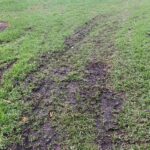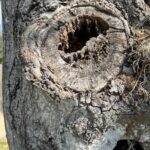How To Know If Your Tree Is Dead or Dying
With colder weather and seasonal changes sometimes a tree can appear dead, when it’s really just dormant. A dormant tree is typically dormant due to lack of sun, colder weather, or lack of water or nutrients. A few simple signs can assist you in figuring out if your tree is dead, or dormant. A tree may have tell tale signs that appear telling you the tree is dead. Some signs being; lack of leaves, branches without buds, or falling branches. All of which could also occur on a dormant tree. There are more obvious signs such as rot, fungus or mushrooms growing from the trunk, large cracks or flaking bark, even a hollow trunk. A tree is not considered dead until it is unable to absorb nutrients any longer.
There are 2 simple ways to tell if your tree is dead:
Simple snap test – Pick an established branch that is at least a year old, bend that twig to roughly a 90 degree angle. If the twig bends there is still life, if it breaks, the tree is likely dead (some species of trees may still break when bent at that angle – this does not mean it is a dead). You may want to try this on multiple branches, as sometimes a tree will have dead growth, but does not mean the entire tree is dead.
Scratch test (This test is recommended to be done by a certified arborist to avoid any damage to the tree) – Take a knife or sharp object you want to scrape the top layer of bark to reveal the second layer (you do not want to create a large wound, so keep the scratch area small) If the second layer is green, that is a sure sign that your tree is still alive. If it is not, you may want to have an arborist come look at the tree to determine if it is sustainable or not.
Just because a tree is showing signs of poor health, decay, and possible death – does not mean it can’t be saved. Sometimes, even with all the signs pointing to the tree being dead or dying, it is possible to turn around. If you are ever questioning if your tree is dead or dormant you can always call an arborist for a professional diagnosis and treatment plan.





